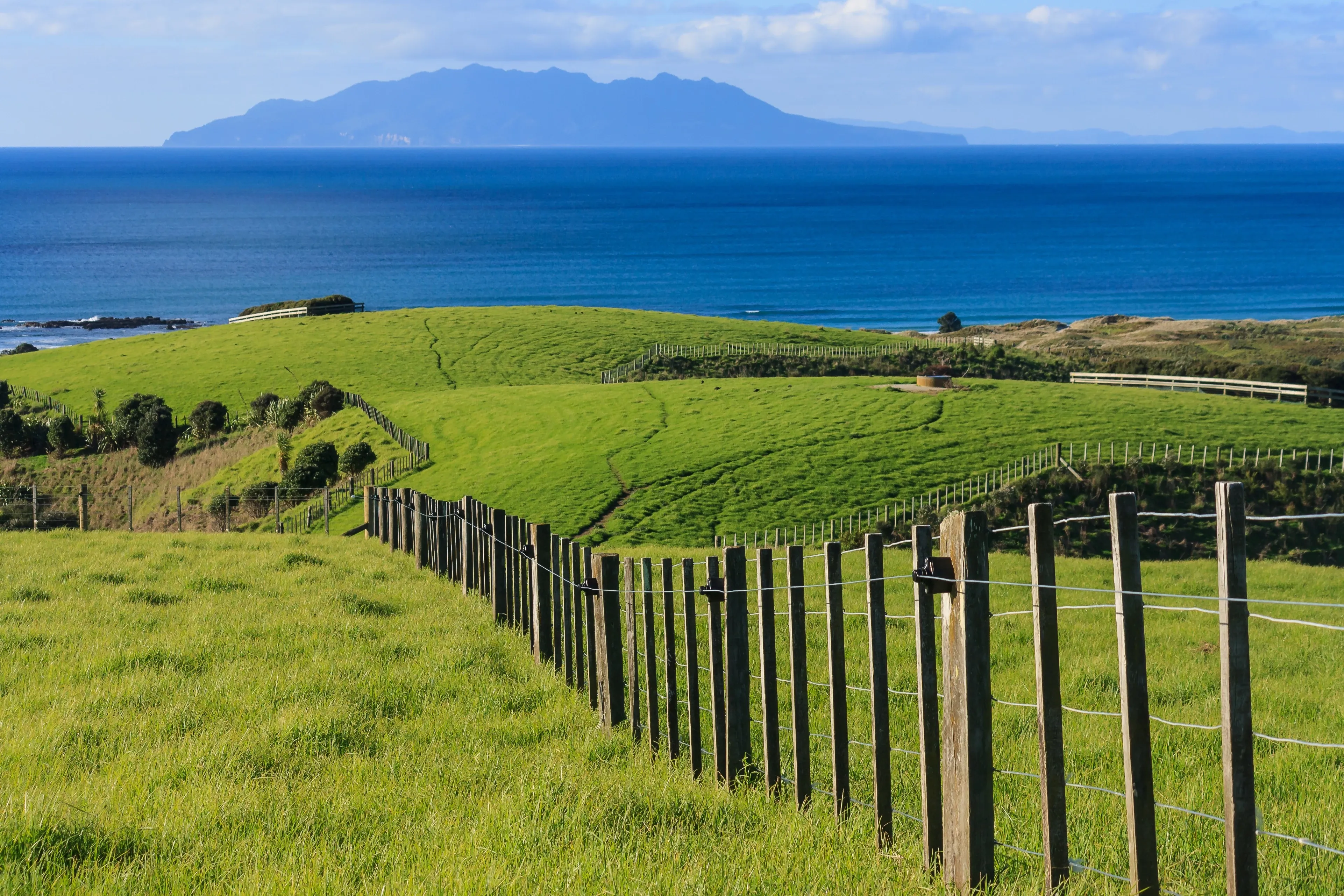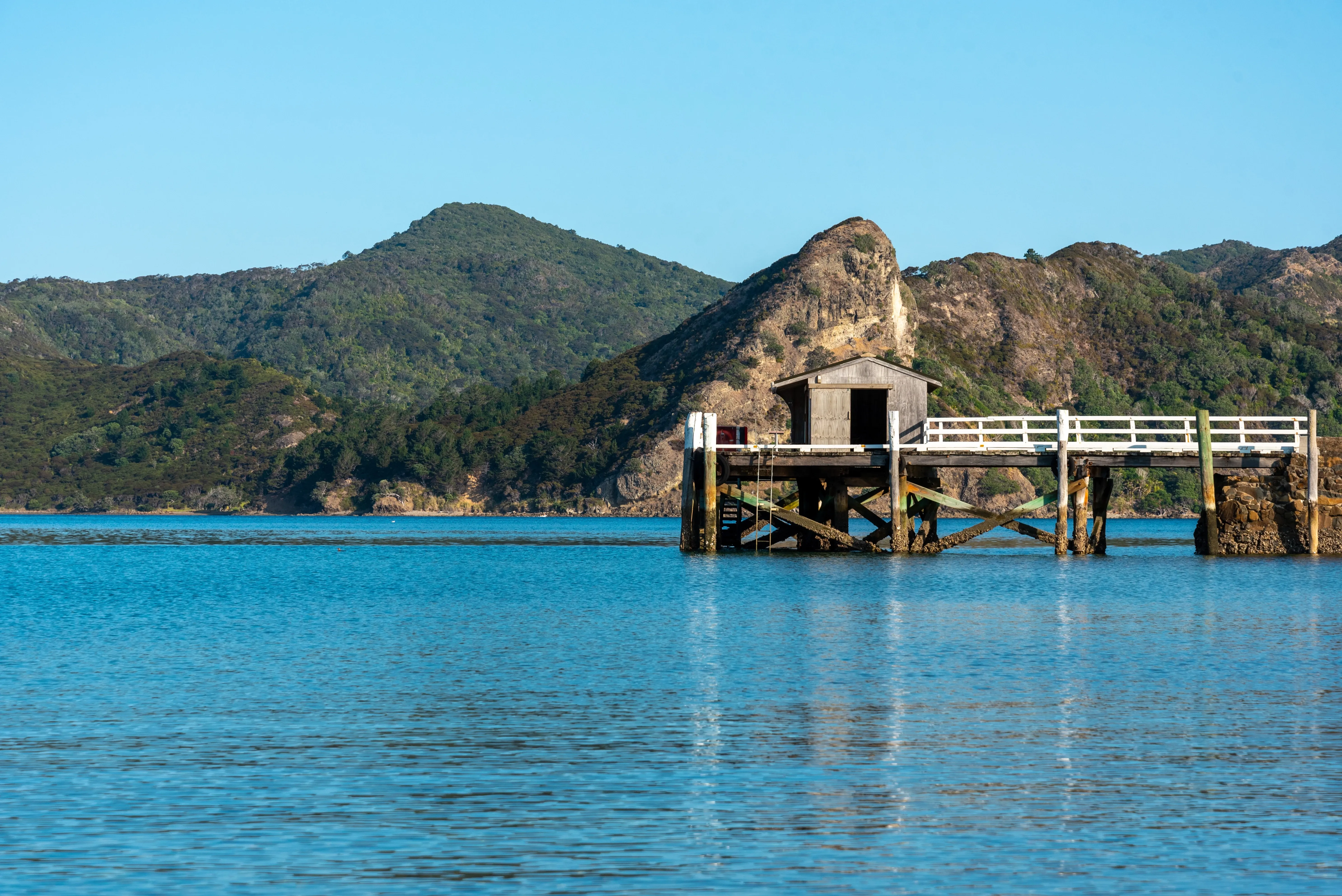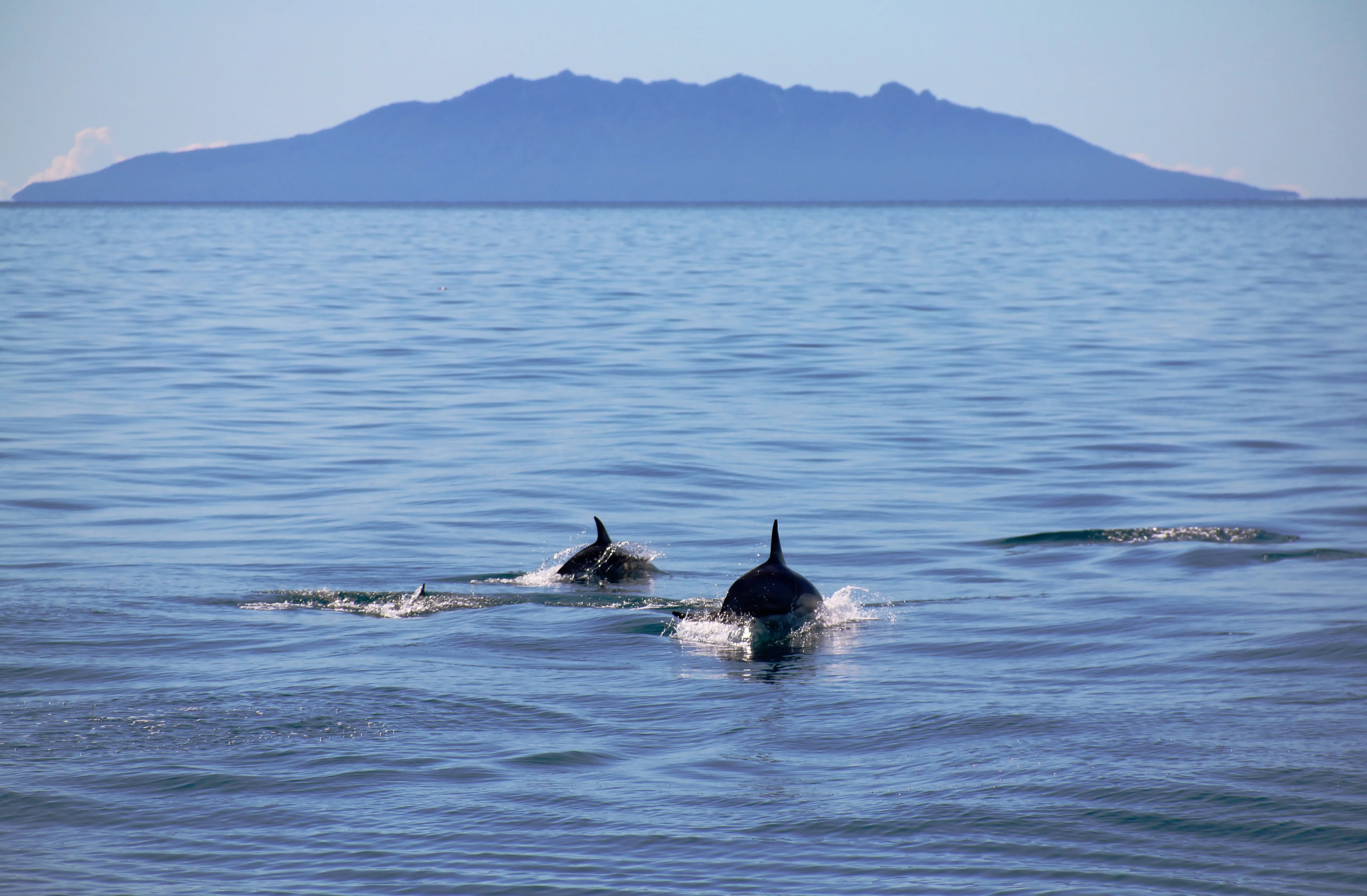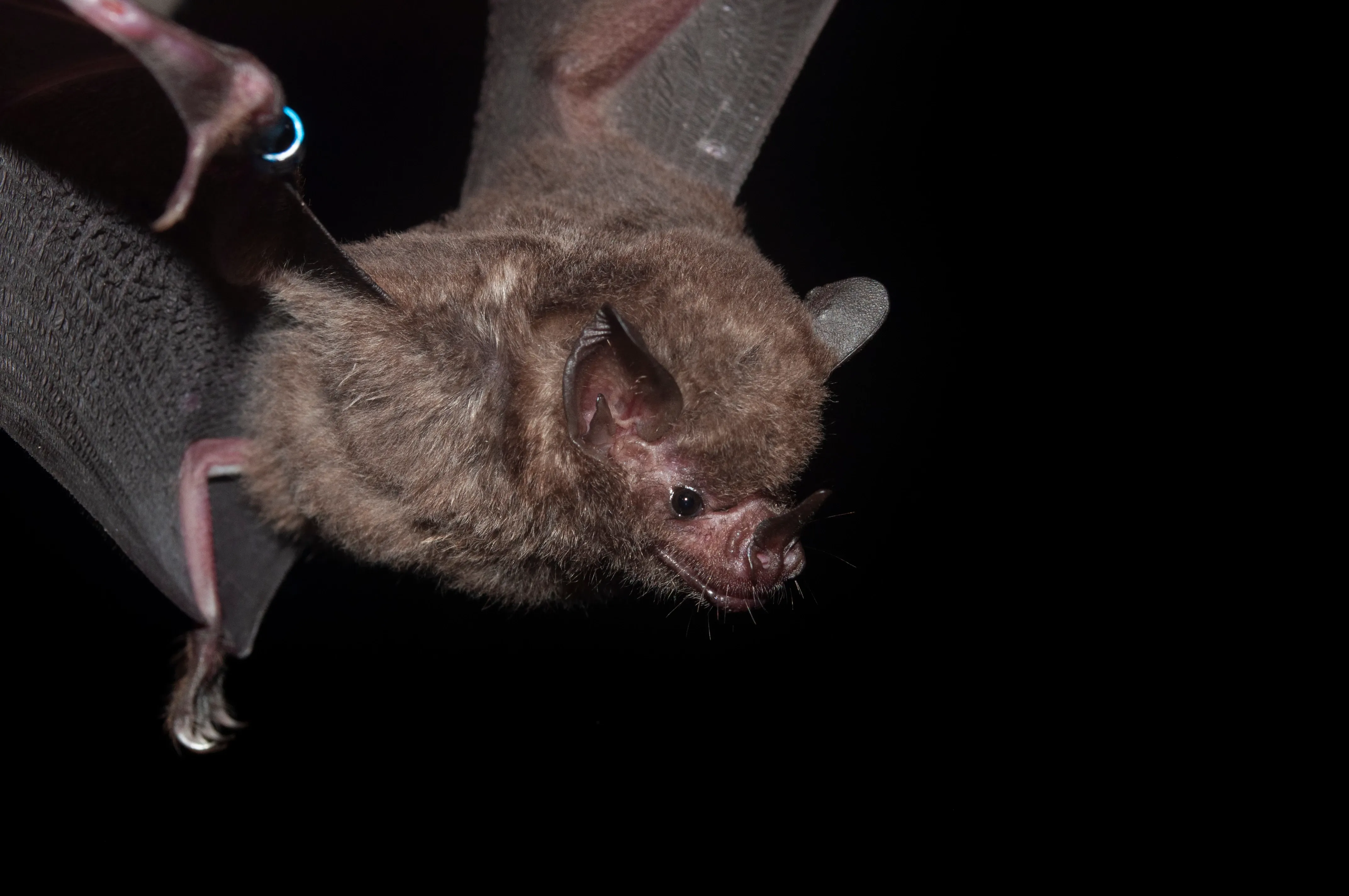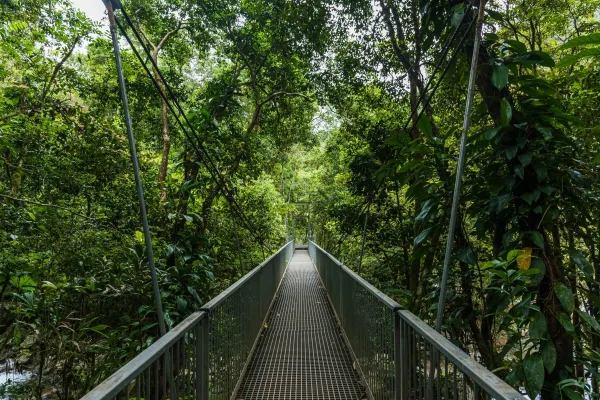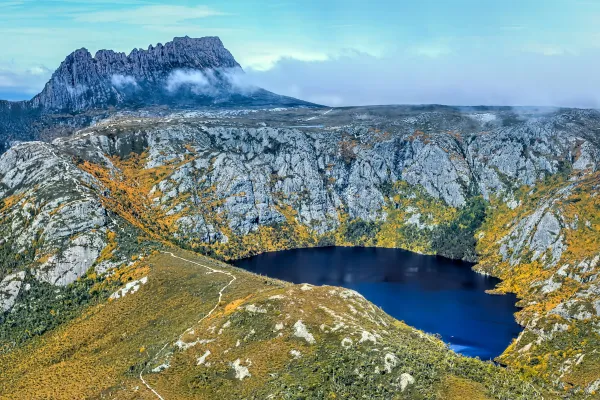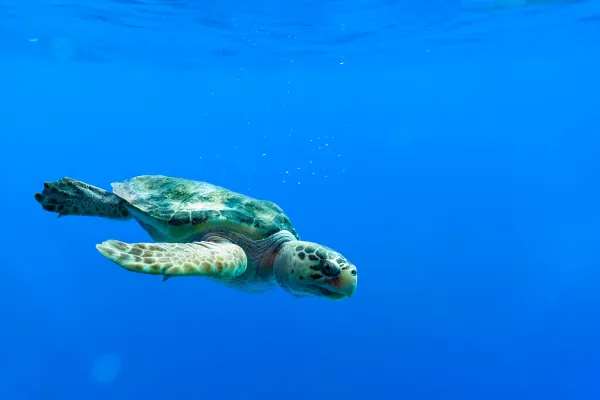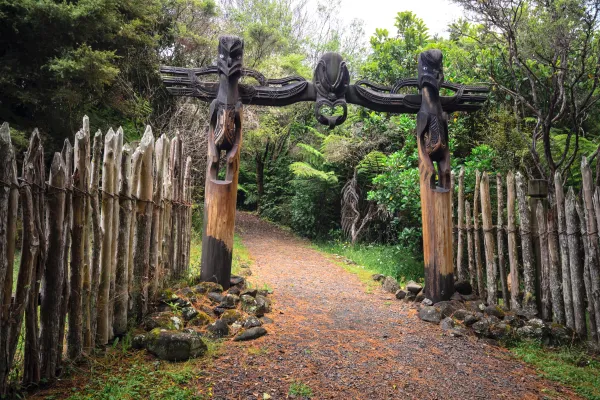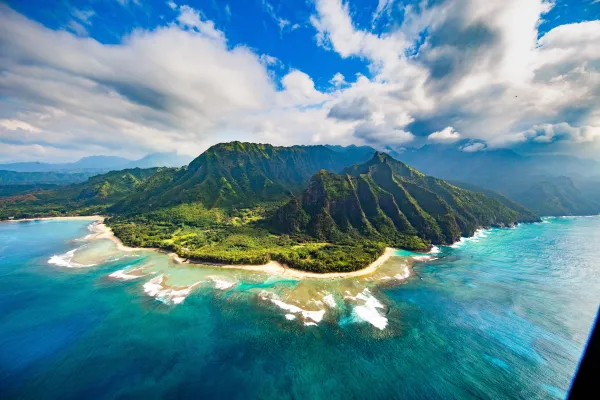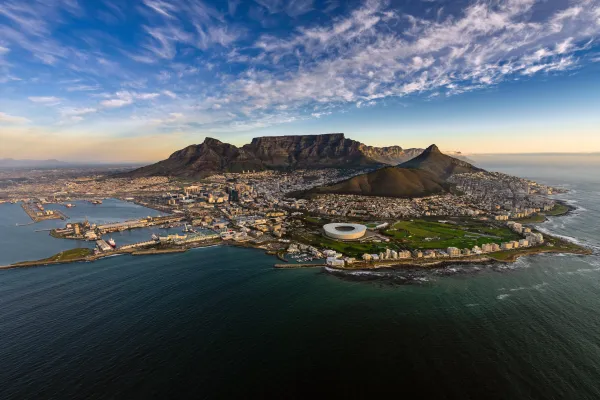Little Barrier Island - A pristine paradise
Just 80 kilometres from the bustling city of Aukland lies a tiny island with astounding biodiversity. Little Barrier Island is a predator-free enclave supporting so many endemic animals that its nickname is ‘New Zealand’s Ark’. Here is the lowdown on this offshore sanctuary and its phenomenal wildlife.
Little Barrier Island lies just 24 kilometres from mainland New Zealand and measures a mere 28 square kilometres. However, it is an entirely different world. The Māori call Little Barrier Island Te Hauturu-o-Toi - ‘the wind’s resting place’. The name refers to the clouds that often shroud the island’s volcanic mountain peaks, providing it with life-giving moisture.
Cut off from the mainland by the waters of the Hauraki Gulf, the island is among the country’s most unspoiled and intact ecosystems. Despite its small size, Little Barrier Island has a diverse array of habitats - from its rocky shores to its virgin forests. And all of these environments are brimming with life. This precious sanctuary is home to some of the nation’s most unique and endangered plants and animals. Little Barrier Island is New Zealand as it used to be.
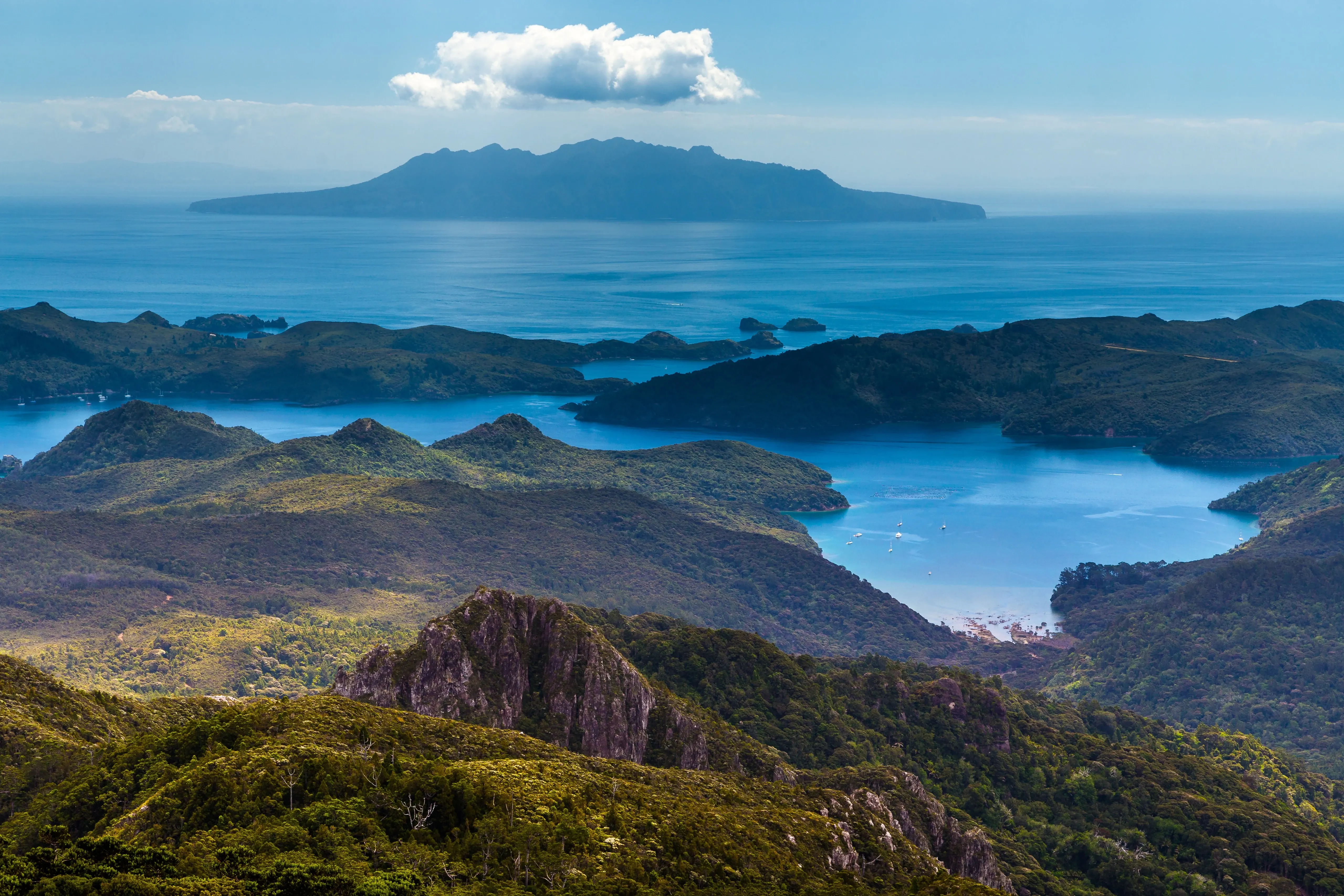
The government has protected this invaluable wilderness since 1895, when it became the country’s first nature reserve. The Department of Conservation collaborates with Ngāti Manuhiri, a group of Māori tribal leaders, to oversee the reserve’s conservation. A predator-control programme has been particularly impactful in restoring Little Barrier Island native wildlife. The project eradicated only two introduced hunters - feral cats and rats - by 1980 and 2004, respectively. Consequently, indigenous wildlife has thrived on this isolated inkblot of land.
Why Little Barrier Island is an ecological treasure trove
The islet’s long-term protection, remote location, and wet, temperate climate have made it an invaluable ecological outpost. Free from the pressures of alien predators, habitat loss, hunting, and pollution, threatened animals have flourished here.
Similarly, Little Barrier Island is a haven for some of New Zealand’s rarest and most unusual plants. Visitors can look forward to encountering some of the world’s weirdest and most wonderful species. Some are found nowhere else on Earth.
Fauna of Little Barrier Island
1. Invertebrates
For example, the wētapunga, or giant wēta once occurred across New Zealand. Today, however, all 11 species survive only on Little Barrier Island. The wētapunga is a prehistoric relative of crickets and grasshoppers that scientists believe has existed for around 190 million years. However, this species is far larger than most of its modern counterparts - a phenomenon called gigantism.
The giant wēta is the world’s heaviest insect, weighing up to 35 grams - around the same as an adult hamster. In the Māori language, wētapunga means ‘god of ugly things’. However, this hefty invertebrate is harmless to humans and predators. In fact, its intimidating appearance is its only line of defence.
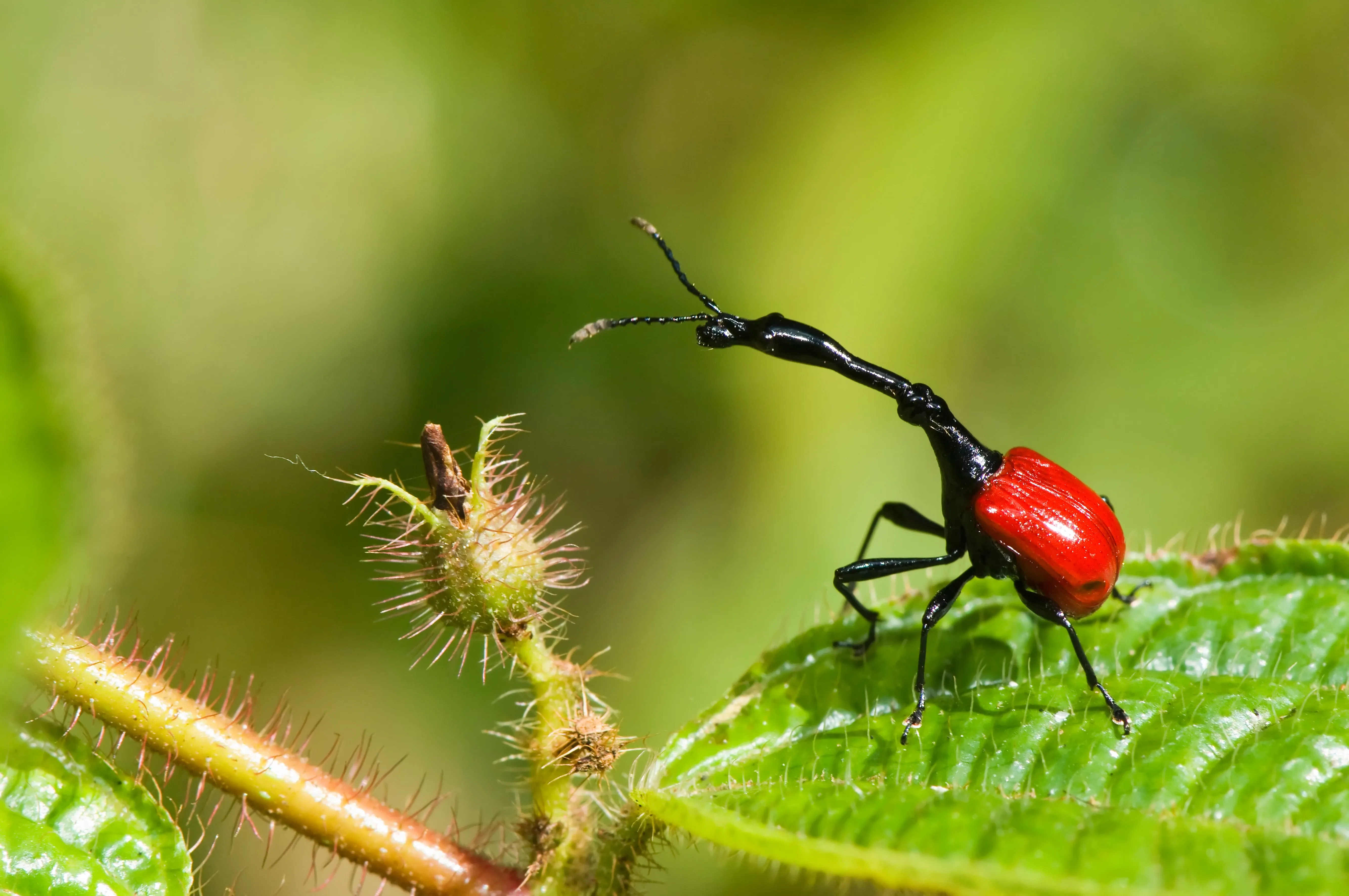
On the other hand, Little Barrier Island’s giant centipedes are poisonous to insects and mammals alike. However, the toxin is not potent enough to kill large animals or humans, although bites can be extremely painful. Another interesting critter indigenous to Little Barrier Island is the giraffe weevil. These strange-looking insects use their elongated necks to build nests and for fighting.
2. Mammals
New Zealand has only two native land mammals - the long-tailed and short-tailed bat. Both species have well-established populations on Little Barrier Island. Short-tailed bats are the only bats to forage on the ground. They emerge from dark hiding places at dusk to catch around for grubs and insects on the jungle floor. Long-tailed bats hunt high above the forest canopy, swooping silently through the night.
3. Reptiles
Furthermore, Little Barrier supports the most diverse array of reptiles on any island in New Zealand. Most notably, it supports one of the last remaining populations of tuatara in the country. These prehistoric animals are the last descendants of animals that have walked the planet for over 200 million years. They thrived during the dinosaur age and endured through the ages. Today, however, they survive in the wild on only 30-odd islands offshore of New Zealand.
Little Barrier Island’s other rare and endangered reptiles include the chevron skink and Duvaucel’s gecko. The latter is one of the biggest geckos in the world, reaching lengths of up to 28 centimetres.
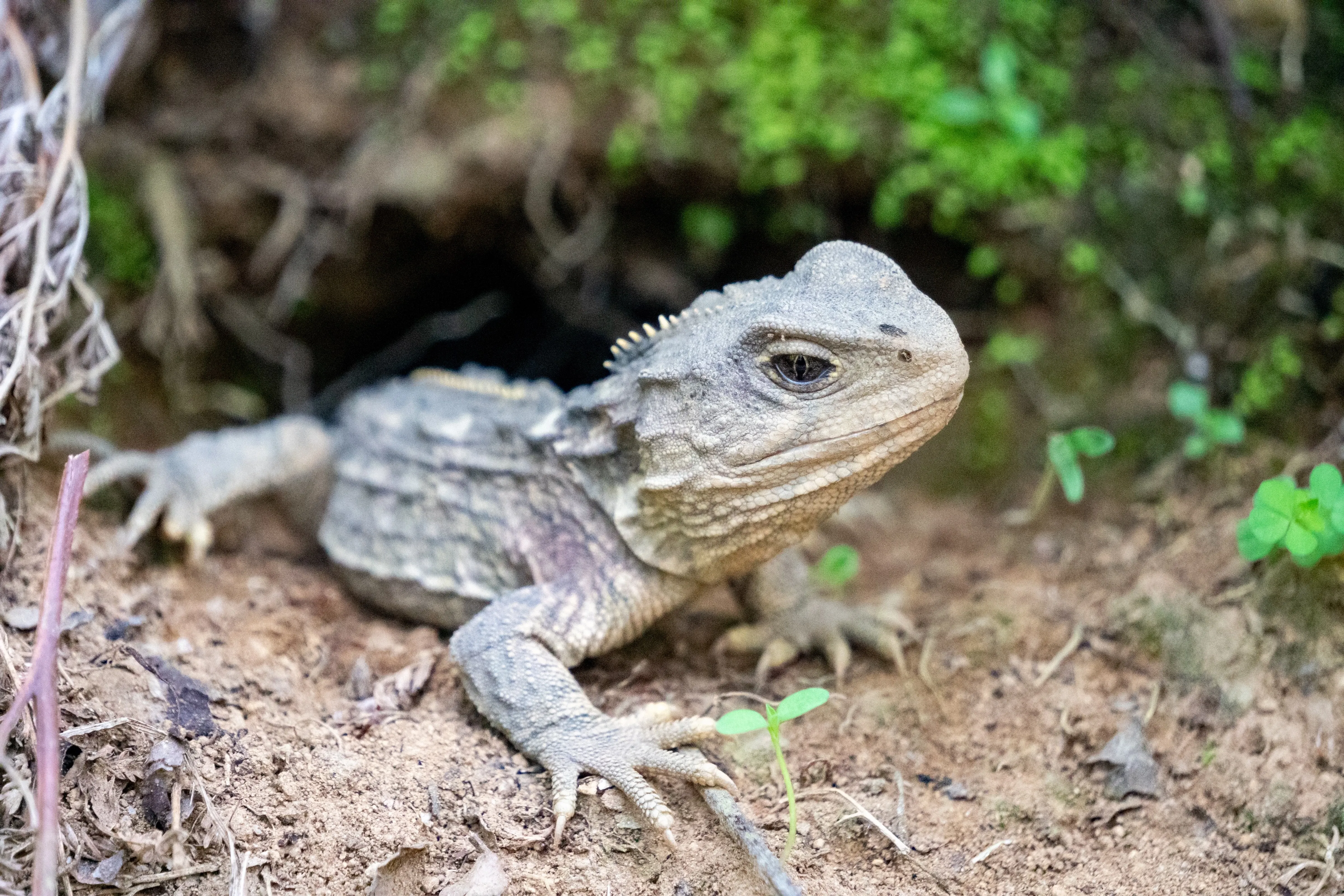
4. Birds
Little Barrier Island’s birdlife is equally exceptional. Roughly 40 resident and migratory avian species inhabit its rocky shoreline and cloud forests, including many at risk of extinction. In fact, Little Barrier is home to New Zealand’s greatest number of threatened birds. Among these vulnerable species is the hihi, or stitchbird, which had died out in every other part of the country by 1883. Nevertheless, this melodious little black and yellow bird survived - and thrived - on the islet over the next century.
Since then, Hauturu’s hihi population has enabled the reintroduction of these rare birds to other sanctuaries. Similarly, Little Barrier Island supports a healthy breeding population of kākā, an endangered native parrot. More significantly, it is one of the last places where the kākāpō roams free. The kakapo is the world’s heaviest parrot, weighing as much as four kilograms. They are endemic to New Zealand, and while they once occurred nationwide, the population is now highly threatened. Scientists estimate there are only around 250 kākāpō left in the wild, making the Little Barrier population critical to the species’ long-term preservation.
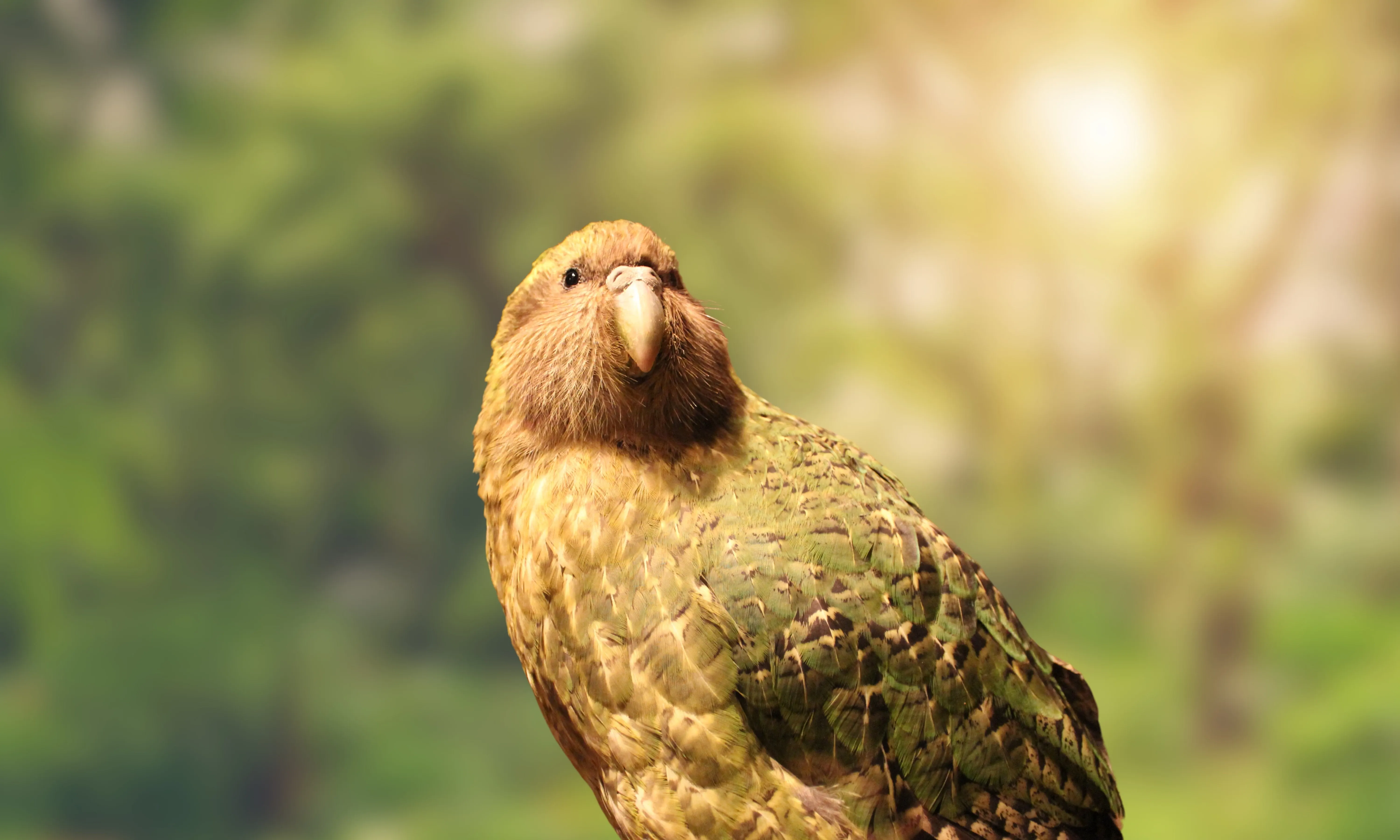
Migratory seabirds also use Te-Hauturu’s rocky shores and craggy cliffs for breeding and nesting. Around October, roughly one million Cook’s petrels land on the island at night to mate and raise their young. Their seafood diet has benefits for Little Barrier Island.
During their annual six-month tenure there, these nocturnal seabirds shower it with guano rich in lime, phosphate, and calcium. A smaller relative of the Cook’s petrel is the storm petrel. Ecologists believed it to be extinct for 108 years before discovering a breeding population on Hauturu in 2013. At night, you can hear the haunting calls of the native Morepork owls (ruru) echoing through the jungle. Little Barrier Island is also home to Zealand’s most iconic bird species, the kiwi.
Flora of Little Barrier Island
Over 1700 botanical species grow on Little Barrier Island, including 400 indigenous plants. Moreover, roughly two-thirds of the island is covered with indigenous forest, where ancient kauri trees have survived for over 2000 years. Under their coniferous canopies, mosses, ferns, and fungi sprout from the rich rainforest floor and fallen logs.
»Little Barrier Island is one of the most remarkable reserves in the world, a place where you can witness nature’s resilience and splendor in its most pristine form.«
The only catch...
As with many good things, travelling to Little Barrier Island comes with a catch. Only visitors with valid permits can access the island, and the government only grants permits for educational, cultural, research, or management purposes. However, an unforgettable eco-adventure awaits those travellers who fit the visitation criteria - or those who make it their mission to do so.
For permits, eager travellers can contact Maungauika/North Head Office on aucklandnorthhead@doc.govt.nz
Sign up for the newsletter
By clicking on “Subscribe now” I will subscribe to the Conscious Explorer newsletter with all the information about mindful travel. Information on the success measurement included in the consent, the use of the shipping service provider MailChimp, logging of the registration and your rights of revocation can be found in our privacy policy.

